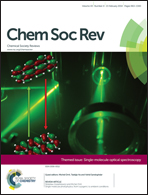DNA replication at the single-molecule level
Abstract
A cell can be thought of as a highly sophisticated micro factory: in a pool of billions of molecules – metabolites, structural proteins, enzymes, oligonucleotides – multi-subunit complexes assemble to perform a large number of basic cellular tasks, such as DNA replication, RNA/protein synthesis or intracellular transport. By purifying single components and using them to reconstitute molecular processes in a test tube, researchers have gathered crucial knowledge about mechanistic, dynamic and structural properties of biochemical pathways. However, to sort this information into an accurate cellular road map, we need to understand reactions in their relevant context within the cellular hierarchy, which is at the individual molecule level within a crowded, cellular environment. Reactions occur in a stochastic fashion, have short-lived and not necessarily well-defined intermediates, and dynamically form functional entities. With the use of single-molecule techniques these steps can be followed and detailed kinetic information that otherwise would be hidden in ensemble averaging can be obtained. One of the first complex cellular tasks that have been studied at the single-molecule level is the replication of DNA. The replisome, the multi-protein machinery responsible for copying DNA, is built from a large number of proteins that function together in an intricate and efficient fashion allowing the complex to tolerate DNA damage, roadblocks or fluctuations in subunit concentration. In this review, we summarize advances in single-molecule studies, both in vitro and in vivo, that have contributed to our current knowledge of the mechanistic principles underlying DNA replication.

- This article is part of the themed collection: Single-molecule optical spectroscopy

 Please wait while we load your content...
Please wait while we load your content...